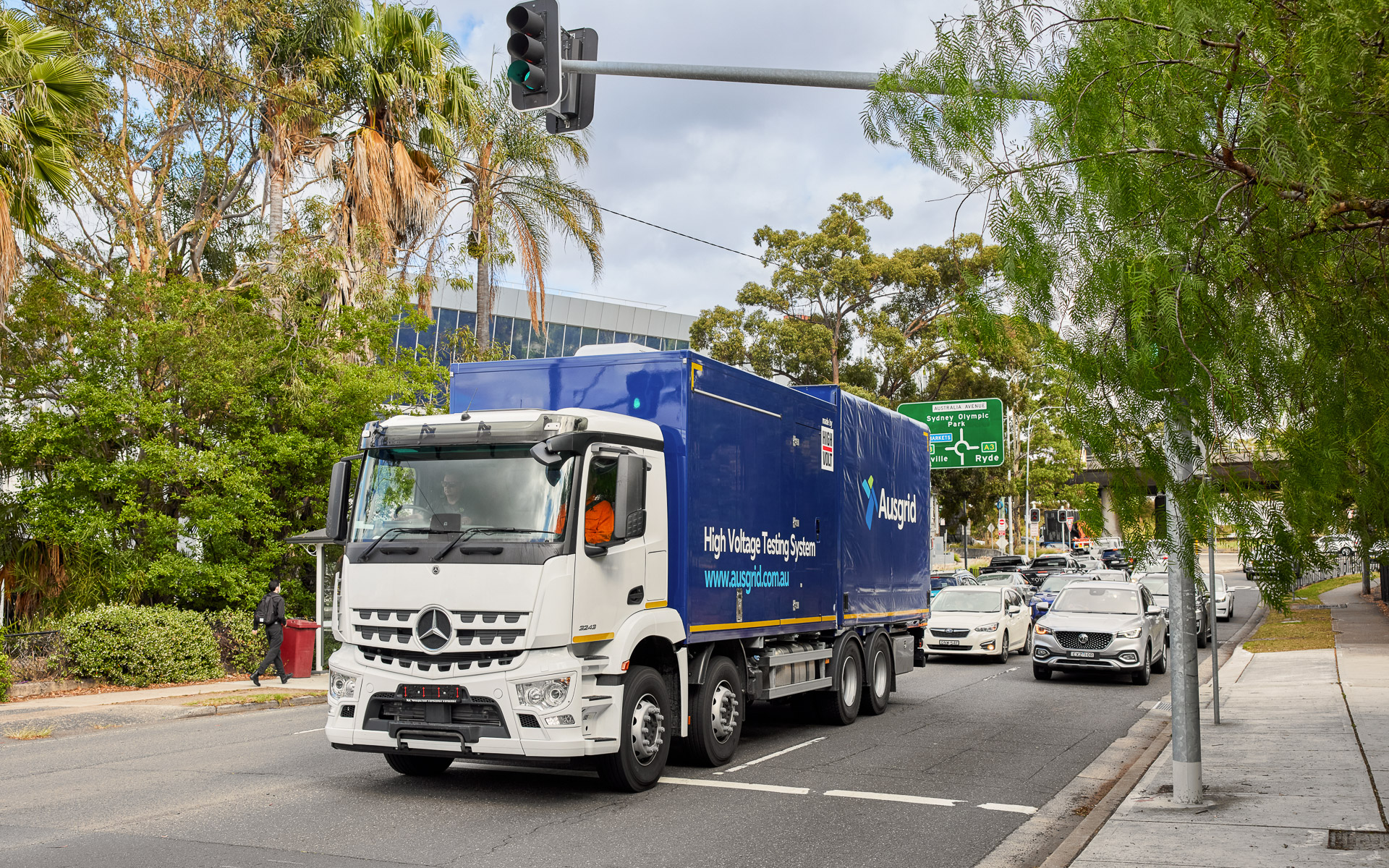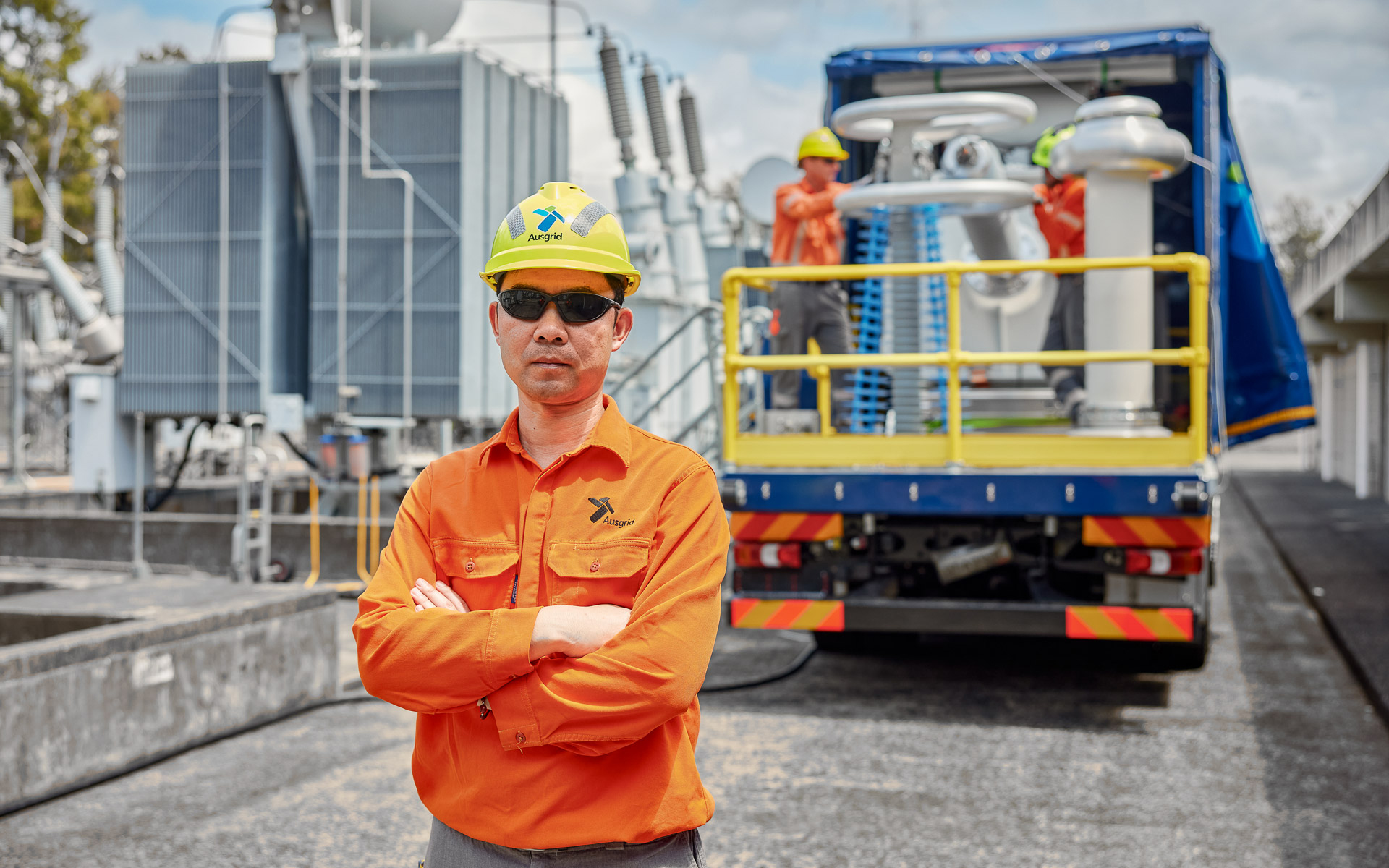The Australian grid operator Ausgrid needed a mobile testing system that could also get around tight corners. HIGHVOLT therefore packed the entire technology onto a compact truck — it was a matter of millimeters.
When most people think of Australia, they probably think of the endless expanses of the outback rather than cramped conditions. But this is exactly what Yilin Xu often has to deal with in his work: “In urban areas, many of our substations are very tightly built and can only be reached via narrow access roads.” Xu is responsible for the testing service at Ausgrid, the largest grid operator on Australia’s east coast, in a grid area covering approximately 22,275 square kilometers, which also includes the metropolis of Sydney. The measurements carried out by his team of 21 test engineering officers are essential to enable Asset Management to better evaluate the condition of the operating equipment and react quickly in the event of impending failures, so that the lights do not go out for the more than four million customers.
To ensure that this remains the case, Xu needed a new test truck for mobile AC voltage testing of transformers, switchgear and voltage converters. “Our current test vehicle dates back to the 1970s and is outdated,” explains Xu. An important requirement: the test truck must not exceed a length of 11.2 meters and must have a small turning circle so that it can drive into the tightly built substations. Xu therefore turned to HIGHVOLT: “We have been working together for many years and are impressed by the high quality and professionalism. We already have a HIGHVOLT trailer in use for cable testing.”
High voltage in a small space
At HIGHVOLT in Dresden, Andreas Thiede, Head of Innovations, and Anne Cholawa, Project Manager, are very familiar with AC voltage testing systems. This method examines the dielectric condition of the equipment. For this purpose, an increased test frequency and an increased test voltage are used to investigate whether partial discharges occur in the object to be tested. If these exceed a certain limit value, this indicates weak points in the insulation system. Nothing special for HIGHVOLT so far. However, the request from Australia was also a first for Thiede and Cholawa. “We have previously implemented mobile test systems as a trailer or container solution, but packing the entire technology onto a truck—we’ve never done anything like this before,” explains Thiede.

Click on the -signs for more information
It was particularly tricky to fit all the components into a small space and to optimize the mass distribution. In some cases, it was real millimeter work: “The box body had to be a maximum of two and a half meters. However, when it came from the coachbuilder, it was ten millimetres too wide, so we had to go at it again.” The project was also challenging from Cholawa’s point of view: “The Australian safety requirements are very strict, the need for coordination is high and the export and import is complex”. But in the end, the truck arrived safely in Sydney Harbour.
Better testing possible
Xu is delighted with the result. “With our old testing system, we could only test at 50 hertz, now we are much more flexible in terms of frequencies—100 or 200 hertz are also possible. This makes our measurement results much more accurate.” The truck is also quickly ready for use and easy to operate: “We can pre-program the frequency tests and record the test data. That wasn’t possible before.” And what Xu also really appreciates is the technical support: “We can always turn to HIGHVOLT for assistance.”

YOUR CONTACT
Do you have any questions about the test truck?
Andreas Thiede is there for you:
A.Thiede@highvolt.com










